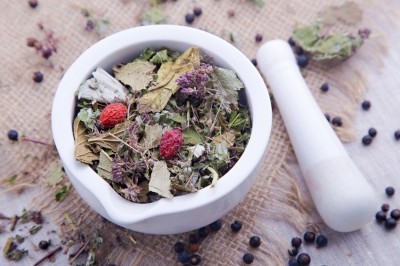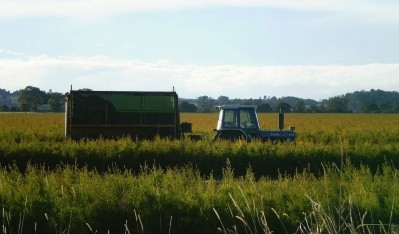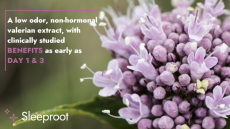New AHP monograph on oshá sheds light on botanical said to be ‘gift of the bear’

The species has been of great medicinal and cultural importance to Native Americans living within its range. The plant is a flowering annual herb that thrives around aspen and coniferous forests from Montana south through Wyoming, Utah, Colorado and New Mexico and possibly into Mexico itself. It is present in alpine habitats from about 2,000 meters up to more than 3,000 meters in elevation.
Profusion of species
There are a number of plants that fall under the banner of oshá, the most common of which is Ligusticum porteri. The plant is a member of the carrot family and has a characteristically celery-like aroma which is attributed to the terpenes common to this family.
But five other chemically similar species are also referred to by this common name, which complicates the fitting of the plant into modern discussions around product quality, standardization and therapeutic efficacy. Herbs of Commerce, the recognized authority on botanical names for regulatory purposes, a reference maintained by the American Herbal Products Association, lists only L. porteri under the common name of oshá.
“From a botanical perspective, the lack of botanical specificity that can occur in indigenous healing systems can be challenging. However, indigenous cultures have their own classification of plants that does not follow Linnaean-styled taxonomy,” the monograph notes.
Evidence from archaeological find
Oshá (which is said to mean ‘bear’ in a non-specified Native American language) has an interesting archeological history. The root of the plant was identified among other botanical constituents in a leather satchel discovered in Utah. The bundle, referred to as the Patterson Bundle after its discoverers, has been dated to somewhere between 200 and 600 years ago.
The plant is a common constituent of many North American traditional medicine systems, including those of the Hopi, Diné (Navajo) and Zuni peoples.
The Native American tribes strongly associated the root with bears, calling it ‘bear medicine.’ In the animist traditions of several tribes of the Southwest the botanical was called the ‘gift of the bear.’
Connection to bears
According to the monograph, ethnobotanist Shawn Sigstedt PhD, a professor at Colorado Mountain College, tested this relationship some years ago by introducing the root into the cages of bears in zoos on two occasions. The bears were observed to chew the roots into a mash and to rub the mash into their bodies. Another report from an herbalist in the region records having come across the carcass of a bear that had been shot that had apparently packed its wounds with the fronds and roots of the plant.
As with other monographs of the series, AHP’s oshá monograph gives a section on lab procedures to accurately identify the plant. This can be done with HPLC, HPTLC or possible gas chromatography procedures.
Pharmacokinetics, therapeutics
It also includes a discussion of pharmacokinetics. There are no studies on L. porteri or any of the other species identified as oshá. But the monograph lays out results from studies done on two similar species whose pharmacokinetics might shed light on those of oshá. Those species—Levisticum officinale, and Ligusticum sinense—are of Chinese origin and have been grouped under the common name ‘lovage.’
There is some modern clinical data on the effects of some of the constituents of oshá, which, interestingly, include melatonin and serotonin. Traditional therapeutic use was mostly to treat respiratory infections. Modern herbalists, mostly from the region itself, employ the plant for similar purposes.
Sustainability questions
The monograph notes that the limited availability of the plant means special care must be taken if and when the plant gains in popularity. It is still a mostly under the radar botanical, the monograph notes, but that is changing. In 2014, according to information gathered by AHPA, somewhere between 1,000 kg and 2,000 kg of the roots were collected. The species is primarily wildcrafted, as attempts to cultivate it have met with limited success.
“The use of oshá has increased commercially, underscoring the need for increased awareness about when it should and should not be used, sustainable harvesting practices, and use of alternative species,” the monograph states.
The plant is regulated by a number of state agencies, such as in Colorado, where harvesting permits are issued and the annual root harvest is limited to 10 pounds per person. The biggest landowner where the plant grows is the US Forest Service. The monograph notes that AHPA has made some contribution to this discussion by recommending that, “‘[S]ustainable harvest levels, fair market value, reserved areas for Indian Tribes, and Pilot programs’ for a harvest permit system be considered when establishing forestry plans,” according to the monograph.
Because of the plant’s presumed limited fecundity and the short growing seasons in its habitat, the monograph sounds a strong note of caution about its growing popularity.
“Therefore, judicious use of oshá is recommended, as well as substitution with similarly acting botanicals, especially those that are easily cultivated (e.g., Levisticum officinale and/or Angelica species,” the monograph states.
Full copy
To purchase a copy of the Oshá Monograph (which was produced in collaboration with United Plant Savers), or copies of the other monographs in the series, visit the AHP website.
















